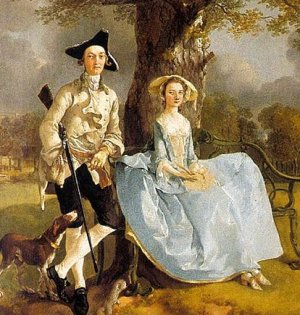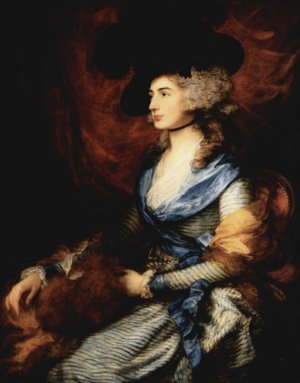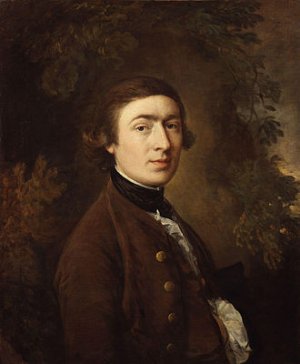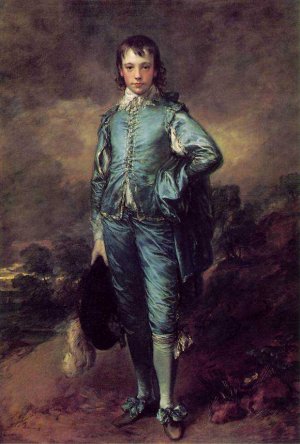Thomas Gainsborough was born in England and began drawing when he was very young. He started taking lessons at the age of 13. It is said he once sketched a thief stealing from the Parson's garden so accurately, they recognized him as a man from the next village. The culprit was apprehended.
Gainsborough is noted for his portraits, but before he started doing portraits he was a painter of landscapes. He still included landscapes even in his portrait painting. In the painting on the left of Mr. and Mrs. Andrews the landscape is as equally important as the subjects. Evidently they are the landowners, but not the ones who work the land.

Mr. and Mrs. Andrews
Enlarge
Enlarge
The next picture, The Harvest Wagon was painted in 1767. Notice the use of light and dark colors in the picture and the depth perception. The picture almost looks 3-dimensional.

The Harvest Wagon
Enlarge
Enlarge
The following picture is Sarah Siddons who was a famous actress during that time. Gainsborough was one of the artists she commissioned to paint her portrait. It is said he had trouble getting her nose to look just right.

Sarah Siddons
Enlarge
Enlarge
He was a musician who played the viola. He once said, "I paint portraits to live, landscapes because I love them, and music because I can't leave it alone".
He brought objects into his studio to include in his landscapes. Once he used a head of broccoli as his model to represent woods in a background.
When he was nineteen years old he married a well-to-do woman named Margaret Burr. Her income helped him to get started as an artist.
He painted many pictures in his lifetime; more than 500 paintings. About 200 of these were paintings of people. He became wealthy because the rich people wanted him to paint pictures of their families. Gainsborough was noticed by King George III who asked him to paint the royal family even though Joshua Reynolds was the official court painter. This caused a rift between the two artists which was eventually healed before they died.
Near the end of his life he was bothered by a swelling in his neck which proved to be cancer which would cause his death. He settled his business, got his affairs in order and died on August 2, 1788.

This biography was written by Patsy Stevens, a retired teacher.
References:
Kostner, Thomas, and Lars Roper. 50 Artists You Should Know. New York: Prestel, 2006.
Order
Wilder, Jesse Bryant. Art History for Dummies. Hoboken, NJ: Wiley Publishing Inc, 2007.
Order
Nichols, John, and Samuel Bentley. Literary Anecdotes of the Eighteenth Century. London: Nichols, Son, and Bentley, 1815.
full view
Gerlings, Charlotte. 100 Great Artists, New York: Gramercy Books, 2006.
Order


 A frequent question:
A frequent question: